As Lewis and Clark made their way deep into the American Frontier, they encountered the vacated land of the Kansa Tribe who had made their westward, south of the Kansas River. Reporting back to Thomas Jefferson who had commissioned their expedition, they wrote in their journals about the beauty of the prairies, abundant with life.
After the Louisana Purchase, Jefferson pushed to expand the nation westward, counting on independent landowners to farm the land to sustain the nation. What the settlers encountered when they arrived were Native American tribes hunting in the Flint Hills, and prairies radiating with the colour of wild sunflowers.
Despite the beauty of the plains, the settlers found tremendous difficulties living on the frontier. When spring arrived, tornadoes tore across the land, wreaking havoc on newly planted fields of golden wheat. Small villages rapidly turned into cities from hunters, traders, and soldiers headed west on the Sante Fe and Oregon Trails. Without a strong military presence to protect the people, chaos ensued in the form of violence in Dodge City and Topeka, the soon-to-be capital.
As aspirations of becoming a free state in the Union arose, so did activists on both sides of slavery, and the state bled for many years during battles that led up to the Civil War. A century later, another victory for African Americans came from Kansas, as the Supreme Court ruled that segregation was unconstitutional in Brown v. Board of Education. Like Dorothy from The Wizard of Oz, we may not be in Kansas, but let’s take a closer look at what the state is known for.
Contents
What Is Kansas Known For?
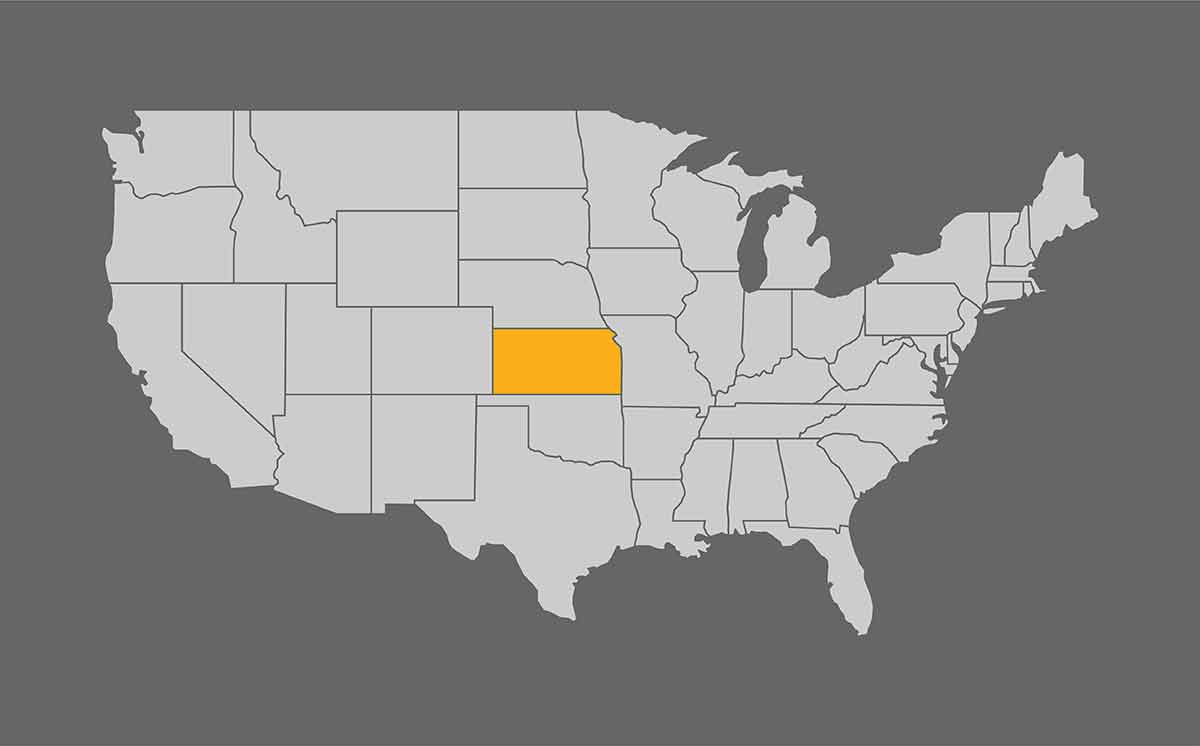
1- The Wizard of Oz
When many people hear the word ‘Kansas’ they immediately think of The Wizard of Oz and Dorothy’s famous line in the movie, ‘’Toto, I’ve a feeling we’re not in Kansas anymore’.
Considered one of the greatest movies of all time, the Wizard of Oz portrays Kansas as a boring, bleak, and desolate place with grey fields stretching far into the horizon.
As a tornado comes across the plains, it picks up Dorothy’s house from monochrome Kansas and transports her to the wonderful world of technicolour Oz.
Based on a children’s book written by L. Frank Baum, The Wonderful Wizard of Oz, the story is believed to contain many allegories about political events in America in the 1890s.
Many believe the tornado represents economic and political upheaval, and the yellow brick road and Dorothy’s silver shoes (ruby in the movie) reflect upon a debate about monetary policy in the nation, gold standard vs. silver, which affected farmers in midwest states such as Kansas.
2- Amelia Earheart
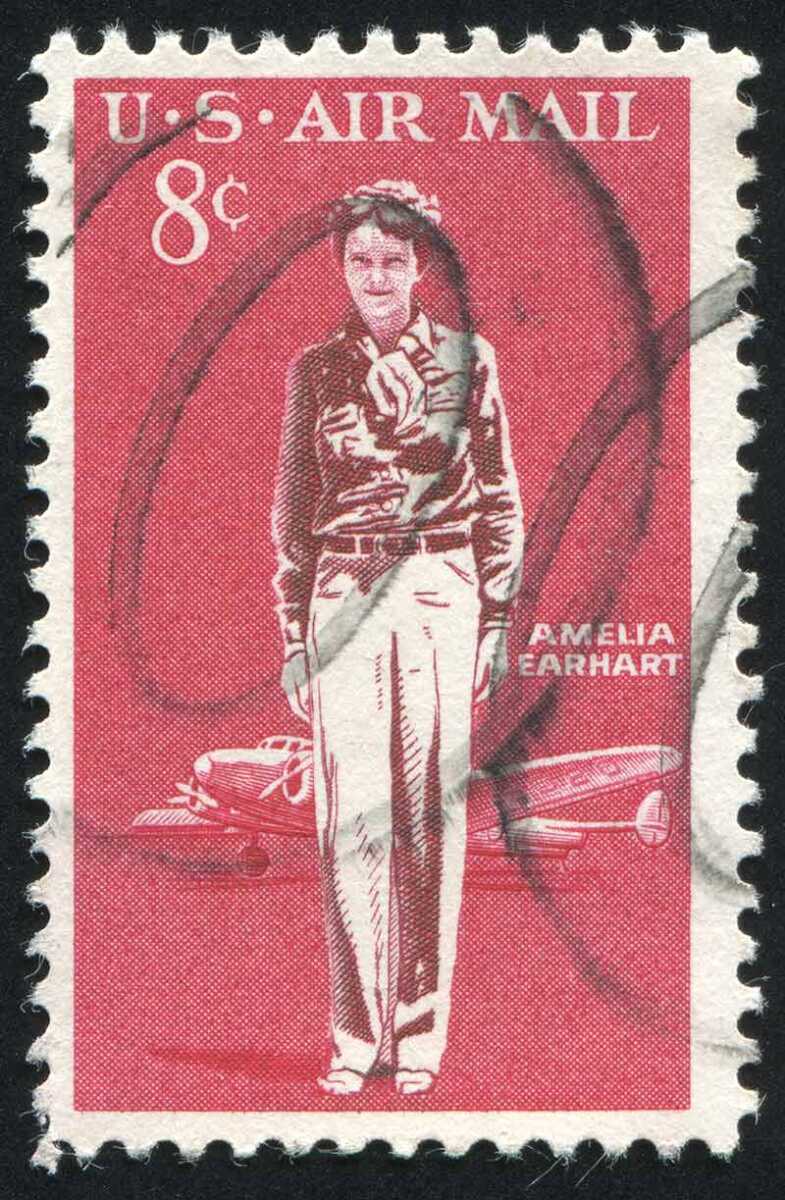
From her hometown in Kansas, Amelia Earheart became the most famous female aviator in history, living an extraordinary life that inspired women from around the world to fly higher than ever before.
Born in Atchison in 1897, she lived in Kansas until the age of 12. After the war, she took her first plane ride in 1920, promptly stating ‘As soon as I left the ground, I knew I myself had to fly’.
The following year, she took her first flying lesson and only six months later, purchased her first plane.
She grew to international fame in 1932, by being the first woman to fly solo across the Atlantic.
In the same year, she became the president of the newly founded Ninety-Nines, an organisation of 99 female pilots that promoted the advancement of aviation.
On her attempt to fly around the world in 1937, she tragically disappeared near Howland Island in the Pacific Ocean, and no trace of her plane has ever been found.
3- Tornados
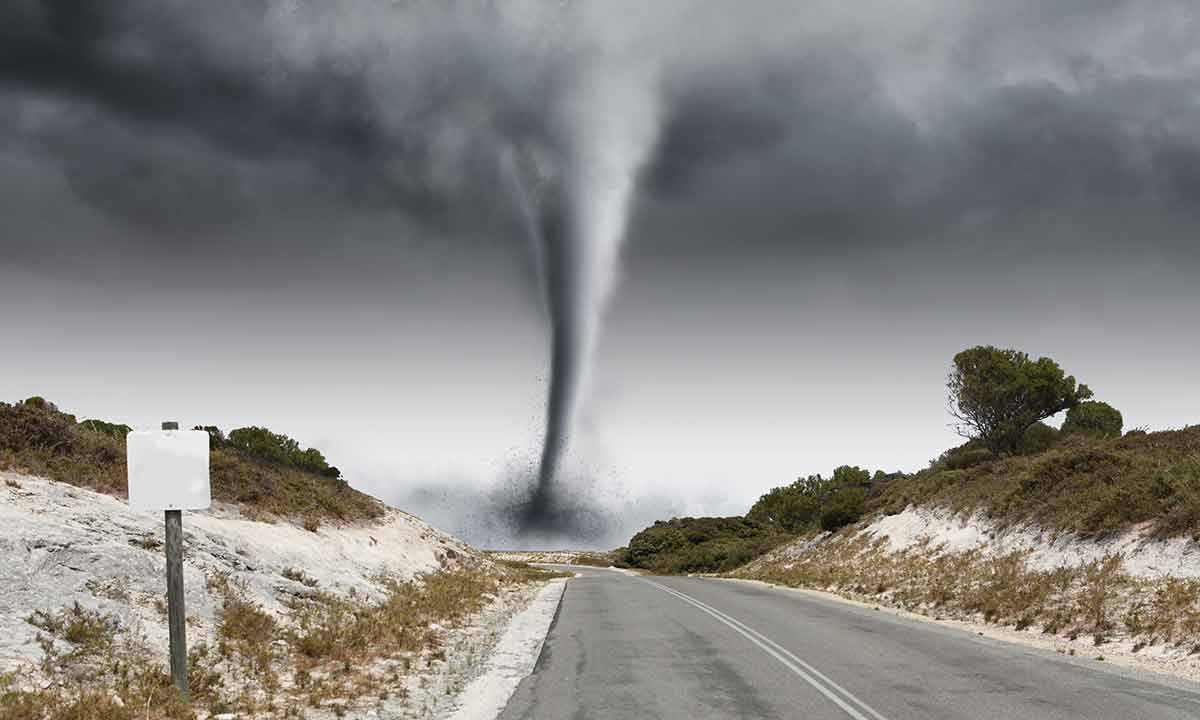
Leaving a path of unbelievable destruction, tornadoes tear across Kansas from April until June every year, causing over $500 million in property damage, and displacing many residents from their homes.
Kansas lies in the heart of Tornado Alley, which stretches from central Texas north to the Canadian Prairies, and from eastern Colorado to western Ohio.
Tornados in the region are caused by warm humid air rising from the Gulf of Mexico, mixing with cool dry air from the north, and warm dry air blowing from the west.
The state receives an average of 96 twisters annually, but recent occurrences have been less frequent, with only 44 twisters touching down in 2023.
In 1955, the small town of Udall was hit by an F5 tornado, the deadliest in the state’s history.
Tragically, nearly half of the town’s population was killed or injured, which created the need for major advances in weather warning systems, that have saved thousands of lives in recent decades.
4- ‘Ad Astra Per Aspera’
From Latin, ‘Ad Astra Per Aspera’ means ‘to the stars through difficulties’ and symbolises the tremendous hardships Kansas faced on the road to becoming one of the stars on the flag of the United States.
In the years before the American Civil War, violent clashes erupted in the state during a period known as Bleeding Kansas.
After passing the Kansas-Nebraska Act of 1954, settlers were allowed to vote if the territory would enter the Union as a free or slave state.
Abolitionists and pro-slavery activists rushed into the territory, attempting to influence the outcome of the vote.
For six years, bloodshed, murder, and destruction ensued, foreshadowing the events to come during the Civil War.
In 1861, Kansas entered the Union as a free state. Soon after, John J. Ingalls, a state senator from Atchison, coined the phrase ‘The aspiration of Kansas is to reach the unattainable; its dream is the realization of the impossible’ creating the official state motto.
5- Sunflower State
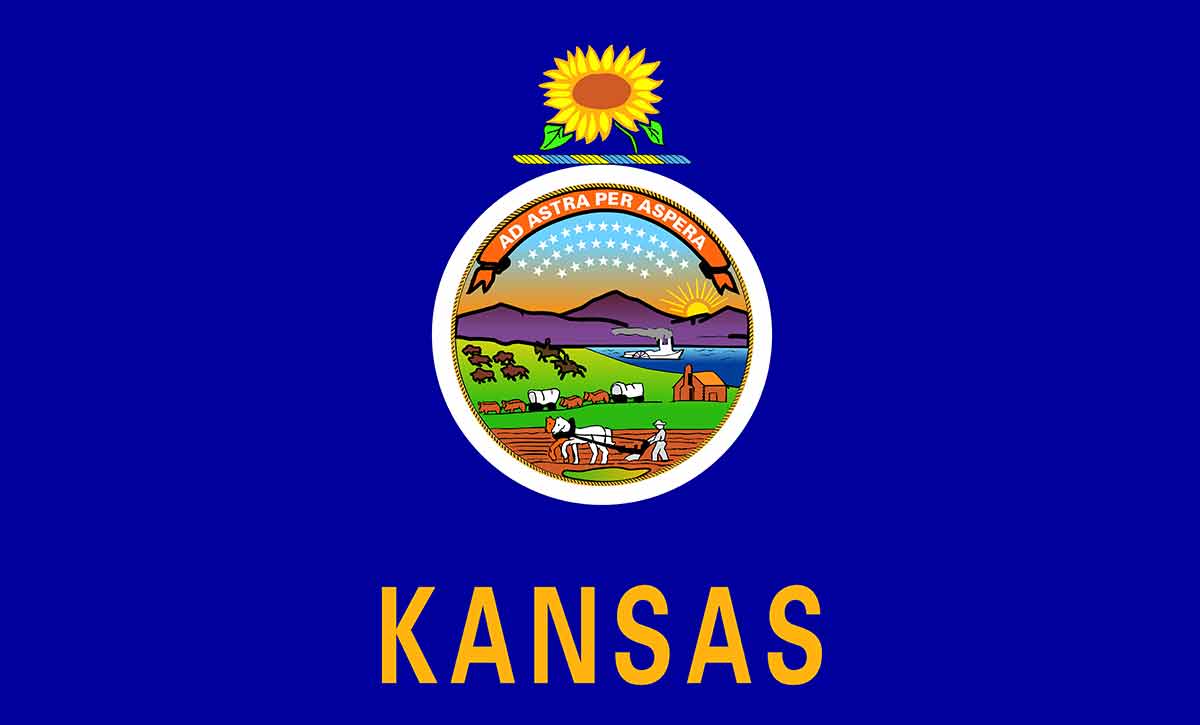
Native to the land, sunflowers grow in every county of Kansas and thrive due to the perfect climate conditions found in the region.
From mid-August to early September, the prairies come alive with vibrant colour, as their bright yellow petals turn to face the sun.
Before European settlers arrived in the state, Native Americans had been using sunflowers as a food source for over 3,000 years, by grinding down seeds to produce flour for making bread and cakes.
They also extracted colour from the plants to make purple and yellow dyes.
Kansas became known as the ‘Sunflower State’ in 1903, when George Morehouse noticed many of the residents wearing sunflowers at an out-of-state event, inspiring him to file legislation to make the sunflower part of the official floral emblem.
During the 20th century, farmers found another use for the crop, by producing sunflower oil, which increased in popularity in the 1960s due to the health benefits.
6- Native American Tribes
Before European settlers arrived in Kansas, the lands were home to several Native American tribes, including the Osage, Pawnee, Wichita, and Kansa (from which Kansas got its name).
The Native peoples grew crops and lived in semi-permanent homes along the streams and creeks in the state.
The Flint Hills were used as a communal hunting ground, and a place to find chert (a type of flint), to make tools, weapons, and ceremonial pieces.
The Kansa first occupied the eastern part of the state near the junctions of the Missouri and the Kansas Rivers, but later were forced westward by more powerful tribes at the end of the 19th century.
Threatened on the eastern borders by emigrant tribes and American settlers, and blocked to the west by the nomadic plain tribes, the Kansa were forced to give up their land, taking refuge on a series of shrinking reservations, or in northern Oklahoma.
7- Topeka
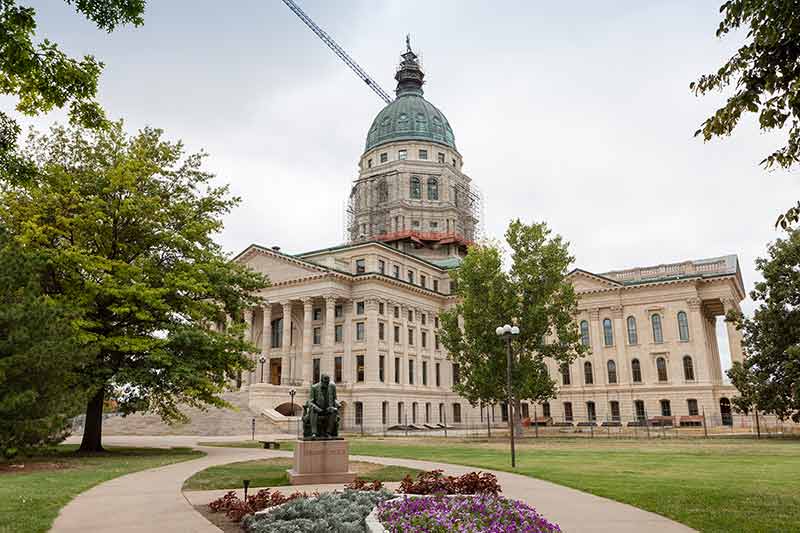
What first started as a passage over the Kansas River for travellers headed west on the Oregon Trail in the 1840s, became a thriving city and symbol for the battle against slavery.
Founded in 1854, Topeka was chosen by a group of nine anti-slavery opponents from Lawrence to become a bastion of the free state movement before the Civil War.
For many years during the period known as ‘Bleeding Kansas’, they clashed with pro-slavery activists in the capital of Lecompton.
When the activists were defeated, Kansas proudly joined the Union as a ‘Free State’ in 1861, making Topeka the new capital of the state.
Many refer to Topeka as ‘The Golden City’ because of the golden colours of rolling prairies, especially in autumn.
The city is also famous for the landmark U.S. Supreme Court case Brown vs. Board of Education, which ended racial segregation in schools, making it unconstitutional.
8- Kansas Dirt Cake
Despite looking like dessert made from the soil in the backyard, Kansas Dirt Cake has been delighting children since the 1980s.
The origins of this sugary treat are thought to be a spin-off of Mississippi’s famous mud pie, a chocolate-layered dessert that gained popularity in the 1960s.
Making Kansas Dirt Cake is relatively simple, and there are many variations to this no-bake recipe.
First sandwich cookies (typically Oreos) are crushed and placed in the bottom of the cake dish.
Then a thick layer of vanilla or chocolate pudding is added on top before adding another layer of crushed cookies to finish it off.
The goal is to make it resemble soil from above, obscuring the delicious and sweet inner layers.
Some alternative recipes include tucking candy gummy worms below or adding edible grass decorations to make it even more realistic.
9- Dodge City
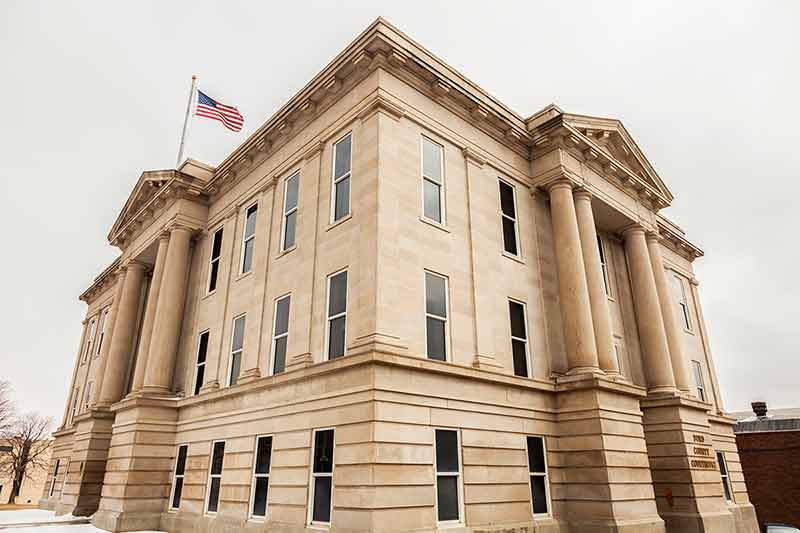
On the heels of an alcohol ban at Fort Dodge in 1872, George Hoover packed up his wagon with whiskey and headed exactly five miles away to build a bar and shop, planting the roots of Dodge City.
Several homes had been built in the area the year before, and shortly after the businesses opened, the rowdy crews from the fort followed.
Within a year, the town expanded to include three dance halls and six saloons.
Located next to the Santa Fe Trail and outside of military jurisdiction, Dodge City became the ‘Wickedest Town in the West’, due to the lack of law enforcement.
Railroad workers, drifters, buffalo hunters, outlaws, and soldiers all scrapped and fought in the streets, and the Wild West shootouts left many dead.
The radio show Gunsmoke brought the legendary fights of Dodge City to life in 1876, when the lawman Wyatt Earp said on the program to ‘Get the hell out of Dodge’, meaning get out now before it gets worse.
10- Brown v. Board Of Education National Historic Park
In honour of a landmark decision made by the U.S. Supreme Court, the Brown v. Board of Education National Historic Park in Topeka pays tribute to the decision that ended racial segregation in public schools in the United States.
In 1954, the Supreme Court ruled that the ‘separate educational facilities are inherently unequal’ which not only strictly applied to segregation in public schools, but implied other public facilities as well.
The decision sparked the American Civil Rights Movement that took place during the 1950s and 60s.
It was a period when the nation stood for equal rights for African Americans and called for the end of racial segregation across the country.
The National Historical Park contains the Monroe Elementary School, one of four segregated elementary schools for African American children in Topeka.
Inside the elementary school, the exhibits shed light upon the hardships African Americans underwent to receive public education, through videos and displays.
11- Flint Hills
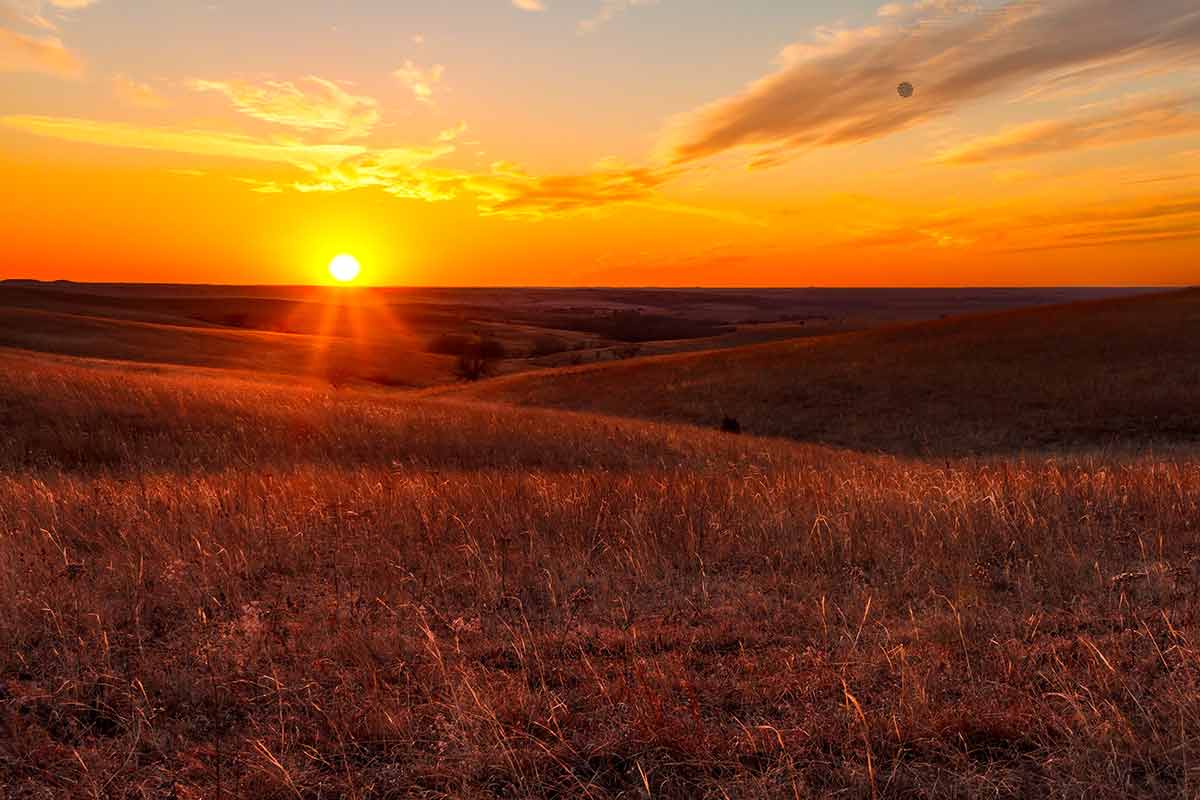
Many people have jokingly said that ‘Kansas is flatter than a pancake’ but many who dispute this claim point to the Flint Hills, located in the eastern portion of the state.
Covering over 25,000 square km in Kansas and northern Oklahoma (Osage Hills) it’s the largest tallgrass prairie ecosystem in the world.
Formed around 250 million years ago, the region consists mainly of limestone, shale, and chert (a type of flint), which is a hard, dense microcrystalline quartz.
As the shale eroded over time, angular fragments of flint encased in limestone accumulated at the surface, preventing settlers from ploughing the rocky soil, and allowing nature to flourish.
The stunning beauty of the Flint Hills is remarkable and unique, with rolling hills, very few trees, and grasses that can grow up to three metres tall.
In the heart of Flint Hills, visitors can explore the Tallgrass Prairie National Preserve where they can discover 500 different species of plants, and watch bison roam freely.
12- Wheat
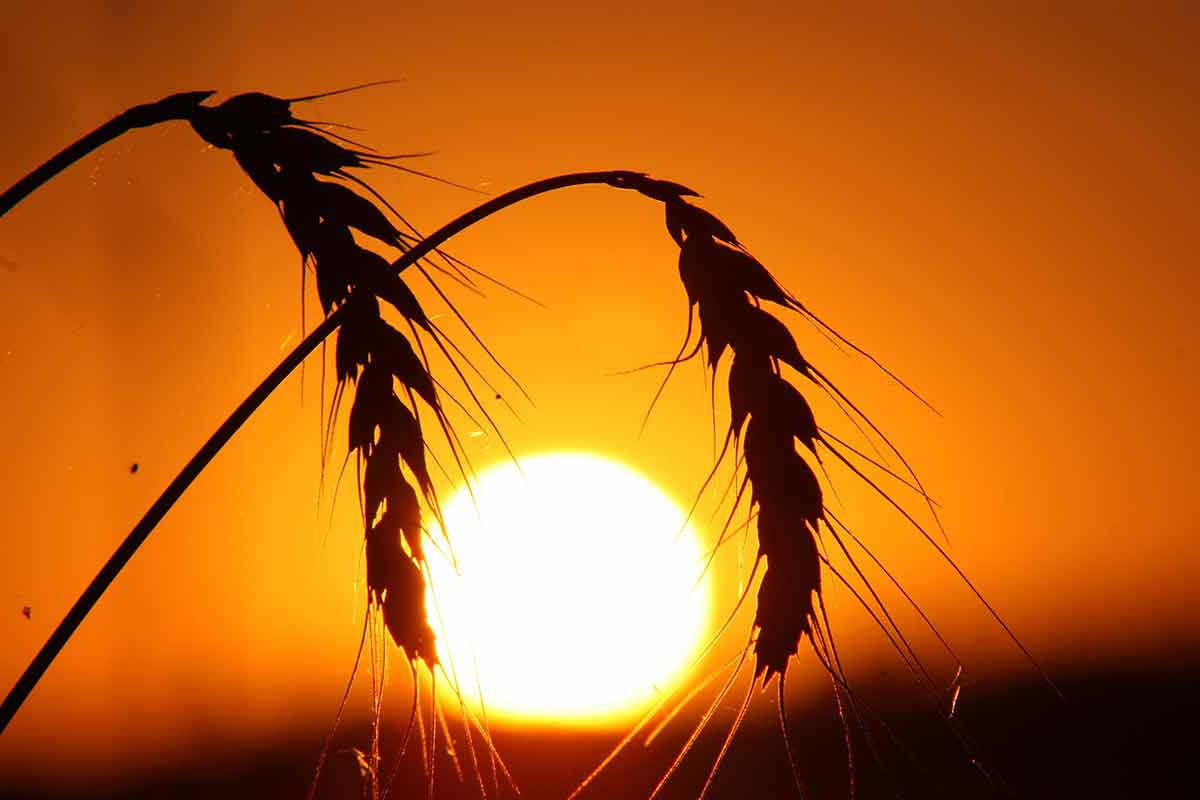
With golden fields as far as the eye can see, Kansas contains nearly three million hectares of wheat fields, making it the second-highest producer of grain in the country.
Located in an area known as the ‘wheat belt’, the loamy soil in the region contains the perfect blend of sand, silt, and clay for the grain to grow, even with only 25 cm of rain per year.
Kansas became the ‘Breadbasket of the World’ mainly due to Mennonite immigrants from a part of Russia (now Ukraine) who arrived with ‘Turkey Red’ seeds, a drought-resistant, higher-yielding wheat.
Growing wheat attracted many settlers, but after the Dust Bowl in the 1930s, production suffered significant losses, due to the topsoil being blown away from bad farming practices.
The government intervened in the mid-1930s, protecting the land from further erosion, and by providing relief to the farmers.
Finally, in the autumn of 1939, heavy rains replenished the soil, and the golden wheat fields flourished again.
13- Monument Rocks And Castle Rock
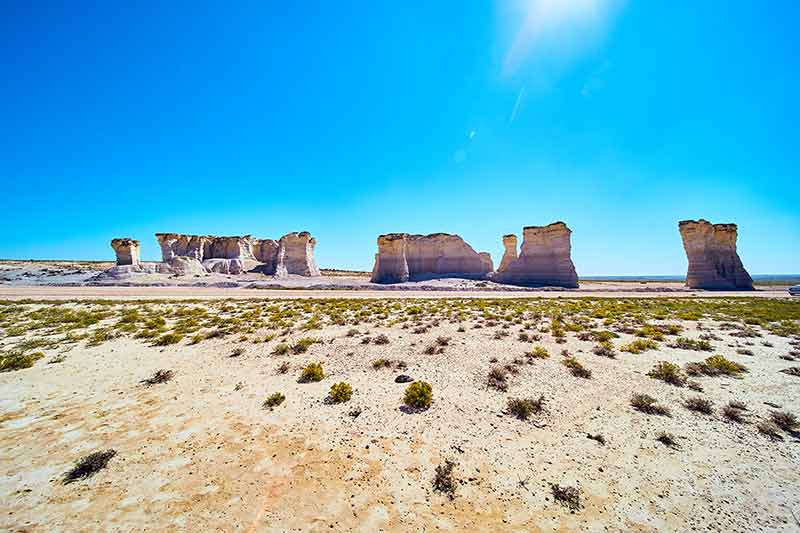
Rising high above the western plains of Kansas, Monument Rocks and Castle Rock are a set of spectacular natural landmarks made of chalk and rich with fossils from 80 million years ago.
Also known as chalk pyramids, the pair have been named one of the eight wonders of Kansas, formed from deposits of an ancient inland sea that once covered most of the region long ago.
Located on the western edge of Gove County, the formations reach up to a height of 21 metres and contain several arches and spires.
Carved over time by the erosive forces of wind and water, the unusual shapes of the rocks are otherworldly, and their unique features have earned names since they were discovered including Charlie the Dog, and the Eye of the Needle.
The tall bright white cliffs of Monument Rocks and Castle Rock contrast starkly with the surrounding prairie lands covered in green grass, creating an unforgettable landscape.
14- Pizza Hut

In 1958, two brothers attending Wichita University came up with a fantastic idea, they borrowed $600 from their mother and opened a tiny pizza restaurant in their hometown of Wichita, Kansas.
Since the small sign outside only had space for eight letters, Frank and Dan Carney decided to name it ‘PizzaHut’.
Staffed by family and friends, the original Pizza Hut sourced their ingredients from the local farmers in Kansas, which added to the unique flavours in their recipes.
The brothers began franchising the business in 1959, expanding rapidly across the country.
12 years later, Pizza Hut became the number one pizza chain restaurant in the world, in both sales and number of restaurants.
In 1980, the company introduced its famous pan pizza, with a unique thick crispy crust and soft interior, and when the internet became popular, Pizza Hut was the first to take delivery orders online.
15- Cosmosphere
Containing the largest combined collection of U.S. and former Soviet Union space artefacts in the world, the Cosmosphere in Hutchinson, Kansas brings visitors on a journey into space through its impressive exhibits.
Opened in 1962, the original venue was housed inside a building at the Kansas State Fairgrounds and used a projector to create one of the first public planetariums in the country.
Among the 13,000 exhibits on display, visitors are treated to up-close looks at the spacecraft flown from all three early manned missions into space, including the Mercury Liberty Bell 7, Gemini X, and the Apollo 13 Odyssey.
The Cosmosphere also features documentaries and films in the Carey Digital Dome Theater, and a unique opportunity to explore the universe in the Justice Planetarium.
For children, the space camps at the Cosmosphere enable students to discover more about space exploration through various STEM-based programs.
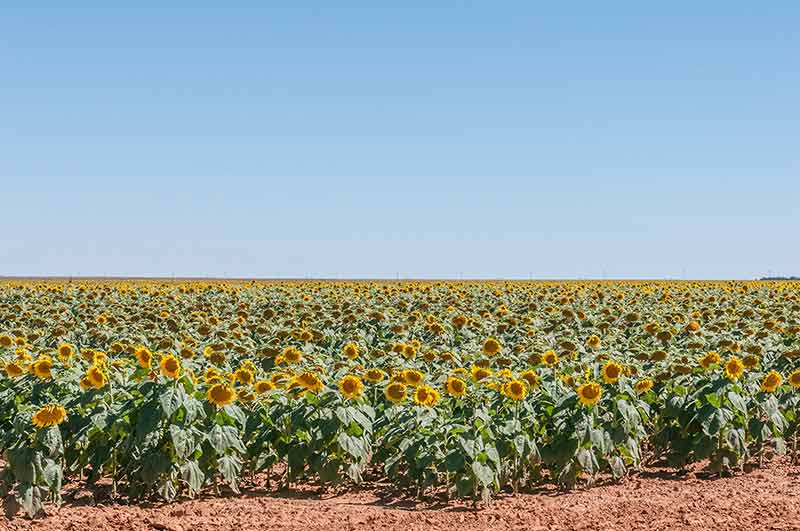
You may also be interested in:
- What is Turkey known for?
- What is Portugal known for?
- What is Greece known for?
- What is France known for?
- What is Belgium known for?
- What is Switzerland known for?
- What is Poland known for?
- What is Australia known for?
- What is Mexico known for?
- What is Germany known for?
- What is Croatia known for?
- What is Hungary known for?
- What Is Romania known for?
- What is The Netherlands known for?
- What is Scotland known for?
- What is Canada known for?
- What is Japan known for?
- What is China known for?
- What is Singapore known for?
- What is Vietnam known for?
- What is Thailand known for?
- What is Cuba known for?
- What is Argentina known for?
- What is Colombia known for?
- What is Spain known for?
- What is Italy known for?
- What is Ireland known for?
- What is Oregon known for?
- What is Colorado known for?
- What is Tennessee known for?
- What is Hawaii known for?
- What is Alabama known for?
- What is Illinois known for?
- What is Mississippi known for?
- What is Nevada known for?
- What is Maine known for?
- What is Idaho known for?
- What is Delaware known for?
- What is Maryland known for?
- What is Wisconsin known for?
- What is Miami known for?
- What is Virginia known for?
- What is West Virginia known for?
- What is Massachusetts known for?
- What is Boston known for?
- What is Florida known for?
- What is Kentucky known for?
- What is Indiana known for?
- What is Montana known for?
- What is Nebraska known for?
- What is Pennsylvania known for?
- What is Vermont known for?
- What is Arizona known for?
- What is California known for?
- What is South Carolina known for?
- What is North Carolina known for?
- What is Texas known for?
- What is Michigan known for?
- What is Ohio known for?
- What is Louisiana known for?
- What is Oklahoma known for?
- What is New York known for?
- What is Georgia known for?
- What is Utah known for?
- What is Connecticut known for?
- What is Rhode Island known for?
- What is Iowa known for?
- What Is Minnesota known for?
- What is New Hampshire known for?
- What is Arkansas known for?
- What is New Jersey known for?
- What is Missouri known for?
- What is North Dakota known for?
- What is South Dakota known for?
- What is Wyoming known for?
- What is Alaska known for?
- What is Washington known for?
- What is Seattle known for?
- What is New Mexico known for?
- What is Kansas known for?
- What is San Francisco known for?
- What is Chicago known for?
- What is Denmark known for?
- What is Norway known for?
- What is Sweden known for?
Plan Your Trip

Rent A Car – Find the best car rental rates at Discover Cars. They compare car hire companies to provide you with the best deal right now.

Find A Hotel – If you’re curious about this article and are looking for somewhere to stay, take a look at these amazing hotels.





